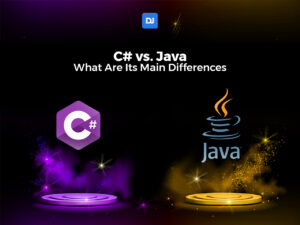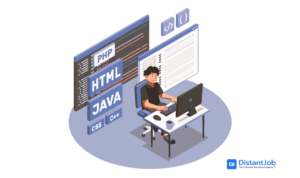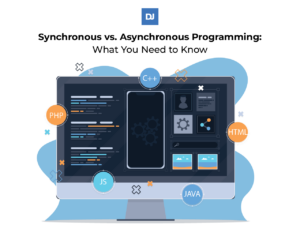As the most popular programming language in 2024 (TIOBE index), Python is a powerhouse in website and software development, task automation, data analysis and more. Due to its simplicity and readability of code (base structure runs line by line), Python has become a popular language for mobile applications, especially for novice programmers and small business owners. Python makes mobile applications faster by allowing you to use tools like Kivy and PyQT.
You could create all the following apps using Python as a language without having to learn more complicated languages that code mobile applications in that operating system:
- Business apps, such as apps for managing inventory
- Education and learning apps
- Service apps, such as apps for checking the weather or an app on how much to tilt a ramp based on weight and height
- Simple or board-type games
- Audio apps, such as music libraries and players
- Simple dynamic apps, such as an app that shows what has changed from 1000 items in a list of items, with many factors being able to change in any given list set
All these applications focus on interaction with end users and do not need to ask your mobile devices to do heavy lifting.
In this guide, we’ll explore Python mobile app development, focusing on the Kivy framework for cross-platform solutions. Led by experienced developers, Kivy stands out for its innovation and reliability. We’ll compare Python’s mobile capabilities with other technologies, helping you make informed decisions for your mobile development projects.
Why Choose Python for Mobile App Development?
On its own, Python is not the ideal language for mobile device applications. Python’s GUI frameworks do not naturally work on mobile devices so to create mobile applications you need to incorporate one of your Python’s GUI frameworks like Kivy and Beeware. Why? Because they do the work of converting code that needs an interpreter to code that is available for use on a mobile device’s native code.
When it comes to Python application development, the cross-platform development capabilities offer the biggest technical advantage.
In the past, if programmers wanted an application to be available on both iOS and Android, they had to build each app from the ground up. They likely had to use different languages for each as well. They might use Swift, Objective C, or other programs to create an iOS version. Then they would code an Android version of their application using a language like Java.
Imagine writing the same book in two different languages, with two different sets of notes, and trying to ensure the two books say the same thing in the end! That is what application development used to be like, with twice the work required to replicate an application’s specific features and functions. Not only did it require creating two versions of the application to ensure the apps were functionally and visually the same, but updating the app also required two completely different codebases—one for the iOS app and one for the Android app.
Now, this is no longer the case, thanks to the creation of modern Python frameworks like Kivy and BeeWare. These frameworks act like a bridge, making it possible to take a single Python codebase and adapt it for different platforms like iOS and Android without starting from scratch for each one.
This way, developers can code their app just once in Python and then easily share it across various devices and operating systems. This method simplifies the whole app development process, keeps the code in one place, and cuts down on the work of managing multiple versions, making sure the app works the same way across different devices.
But, if you don’t want to build a cross-platform mobile application and are interested in either an Android app with Python or an iOS app with Python, these are some things to consider:
| Operating System | Aspects to Keep in Mind |
| Android | * The preferred implementation language for Android is Java. Therefore, if you want to write an Android application in Python, you will need a way to run Python code on a Java virtual machine. * VOCs (a backronym for “Vestigial Output Compiler” or “Vexing Obtuse Compiler”) make this possible. It is part of the BeeWare suite and allows you to access Java native objects like Python, implement Java interfaces in Python classes, and subclass Java classes in Python classes. It will enable you to write Android applications directly to Android’s native API. * VOC is a transpiler that compiles Python source code into CPython bytecode and transpiles that bytecode into Java-compatible bytecode. It means compiling Python source code into CPython bytecode and converting it into Java-compatible bytecode. * There are other several other tools as well that implement Python in Java or vice versa. Some examples of such tools are Jython, JPype, Jepp, py4j, and more. Each of these tools comes with its own advantages and drawbacks depending on the type and scope of your project. |
| iOS | * The steps to build an application for iOS are a bit more complicated than Android. Developers can always use the official Kivy package documentation for the latest information on iOS development using Python. * The process usually involves setting up a Python environment, encoding your application with Python/Kivy, and deploying it with Xcode. * Remember that developers will still need a macOS machine to deploy apps to the Apple App Store, so even if you can build apps in Python, you still need an iMac or MacBook to deploy apps. |
The Growing Popularity of Python for Cross-Platform Mobile Apps
Python has a growing influence on cross-platform mobile app development because of its flexibility and rich ecosystem. In fact, 51% of developers worldwide use Python making it one of the top programming languages to develop apps in 2024.
Developers pick Python as it enables them to create apps for multiple platforms from one codebase, which cuts down on both time and money spent on development. This increasing backing through various tools and libraries makes Python an attractive option for businesses wanting to streamline development across iOS, Android, and other systems.
What Types of Mobile Apps Can You Develop in Python?
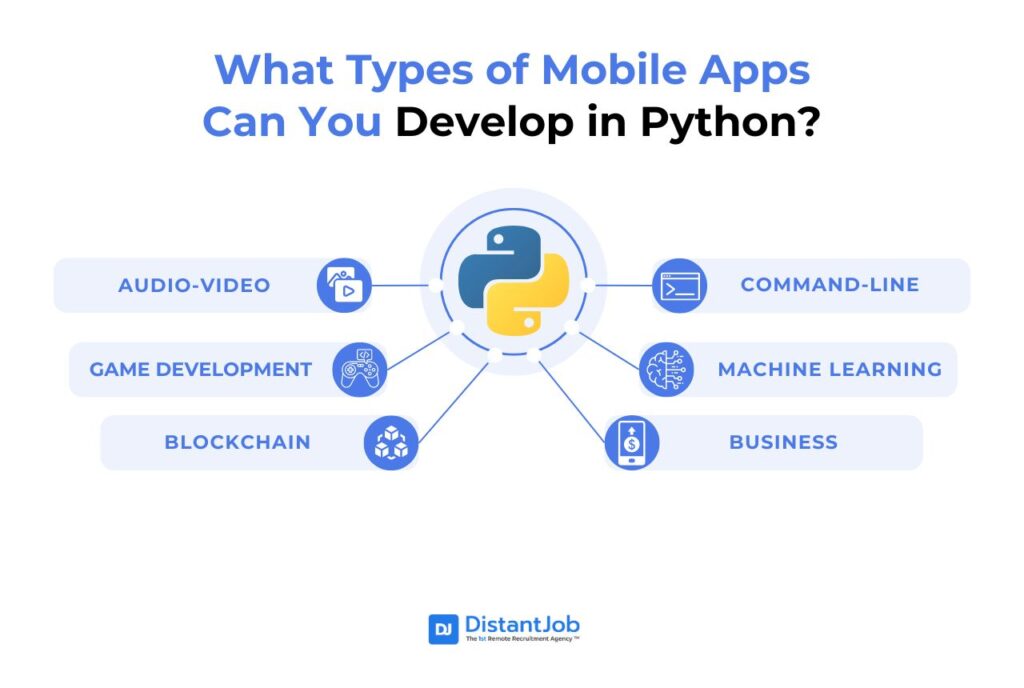
1. Audio-video Apps
Python’s app development capabilities extend to creating music and other types of audio and video apps. You can use Python to explore, process, and stream audio and video content from the Internet. The Python libraries, such as OpenCV and PyDub, are key to making your app development successful.
2. Game App Development
Popular games like Battlefield 2 and EVE Online and many other are developed using Python. In Battlefield 2, Python handles all features and add-ons while World of Tanks uses Python for various functions. Developers can use Python and Pygame to quickly create game prototypes and test them in real-time.
You can also use Python in building game design tools that support the development process, such as creating level designs and dialog trees.
3. Blockchain Application
Blockchain technology is a leading trend in today’s market, and Python makes it easier to develop blockchain applications. And the truth is, while Blockchain development is very difficult for developers, Python makes it easy. Since it’s an easy-to-understand language, it makes building blockchain applications seamless. With it, developers can use HTTP requests to interact with the blockchain on the Internet.
On top of that, frameworks like Flask allow you to set up endpoints for different blockchain features without much effort, which makes interacting with the blockchain easier. Python also gives you the ability to run scripts on multiple machines, which simplifies the process of creating distributed networks.
4. Command-line Apps
The command-line app and the console app are the same. It is a computer program used from a command line or shell and does not have a graphical user interface. Python is ideal for such command-line apps because it has a Real-Eval-Print-Loop (REPL) feature. As Python is a world-renowned language, top app development brands have access to many free Python libraries to create command-line apps.
5. Machine Learning Apps
Another technology trend in the past decade, machine learning development, is an algorithmic technology that provides data to operating systems and enables intelligent decision-making. Developing a machine learning app was previously a daunting task, but it has become more accessible thanks to Python.
Python provides free libraries for machine learning, such as Pandas and Scikit. It can be used under the GNU license.
6. Business Apps
Python has practical agility and the ability to develop various types of apps. That’s why Python also helps with e-commerce app development solutions and ERP. For example, written in Python, Odoo offers a wide range of business applications and makes a suite of business management apps. Python’s popular business app “Tryton” developed is a high-level, general-purpose application with a three-layer structure.
Understanding Python Mobile App Development Frameworks: Kivy vs BeeWare
When it comes to mobile app development with Python, two frameworks stand out: Kivy and BeeWare. Each offers its unique approach to building mobile applications. But which one is right for your project?
Kivy
Kivy is an open-source Python library for developing multitouch applications. If your app needs gestures or multi-touch input, Kivy is a great choice. It’s known for being highly flexible and allows developers to create innovative user interfaces (UIs).
Kivy uses OpenGL ES2, which supports GPU acceleration of graphics. This project uses the MIT license to use this library for free or commercial software. Kivy has its custom UI toolkit, which looks and behaves the same as Android, iOS, Linux, and Raspberry Pi but does not use native features of any platform.
With Kivy, you’re building a Natural User Interface (NUI), which means users can quickly learn how to use the software without teaching almost anything.
However, this means your app won’t have the native look and feel that users might expect from platform-specific apps, as Kivy does not strive to use native controls or widgets. All widgets are custom-drawn. For some, this special design is a plus, while for others, it may be a minus, depending on whether they like native experiences or not.
It is both an interest and a problem for some users.
Kivy’s Key Features:
- One code for all platforms
- Robust graphics engine built on OpenGL ES 2
- It is issued below the MIT license and is free for business use
- Custom UI Toolkit
- The single code base for all platforms
- BSD license released for business use
- Native look and feel applications
- A vast community of invested developers
- A collection of multiple projects, not a single tool
- Fast, easy, accurate
Kivy’s Use Cases:
Kivy is great for building apps with advanced interfaces and user interactions. It’s a top pick for:
- Games: It works well for games that need multi-touch gestures, like puzzles or interactive learning apps.
- Interactive Apps: It’s perfect for apps that require rich user interaction such as drawing or design tools, media players, or educational software.
- Multi-Touch Applications: Kivy has strong multi-touch support making it a good fit for apps with complex touch inputs, like simulations, mapping tools, or touchscreen kiosks.
BeeWare
BeeWare is a versatile collection of tools and libraries designed for building native apps in Python. Its standout feature is its ability to compile Python code into native binaries for each platform, thus allowing for the creation of truly native applications across multiple platforms.
At the heart of BeeWare is Toga, a Python-native, OS-native GUI toolkit. Toga allows developers to create applications that use the native UI elements of the platform they are running on. This means that an app developed with Toga on iOS will use iOS’s native UI components, and the same app on Android will use Android’s UI components, thereby ensuring that apps have the look and feel of native applications on any platform.
BeeWare goes beyond just functionality—it ensures that the visual aspects like fonts, buttons, and overall aesthetics of your app align with the platform’s native design. This means that a Python-built mobile app will exhibit characteristics unique to either Android or iOS, feeling more like a native application, depending on the device.
BeeWare’s Key Features:
- Native User Interface (UI) Components
- Cross-Platform Compatibility
- Toga GUI Toolkit
- Briefcase Packaging Tool
- Single Codebase Deployment
- Open Source with BSD License
- Direct Access to Python’s Rich Ecosystem
- Pythonic API for Mobile Development
- Support for Desktop and Web Applications
BeeWare’s Use Cases:
BeeWare works great for apps that use Python’s strong points, like:
- Data-Driven Apps: Great to build apps that need lots of data processing and number crunching.
- Educational Tools: Works well for apps or platforms that help people learn.
Scientific Applications: BeeWare can handle tough scientific math and show results.
Kivy vs BeeWare: Choosing the Right Framework
Your choice between Kivy and BeeWare hinges on your app type and desired user experience.
Kivy shines when you want to create custom and fresh UIs with multi-touch and gesture-based interactions.
If your app needs advanced graphical elements or complex animations, Kivy’s widget toolkit makes it the best pick.
This toolkit offers the same look and feel across platforms. Kivy fits for apps that need cutting-edge user input.
Examples include games, learning tools, or apps with drag-and-drop or drawing features.
On the flip side, BeeWare puts emphasis on the use of native UI components for each platform. This approach ensures that apps created with it do not work well but also have the appearance and behavior of native applications. Users get a smooth experience that follows platform-specific rules.
If your project needs a familiar, native interface—like business applications or apps that put user-friendliness first—BeeWare stands out as the better choice.
Its capability to use each platform’s native UI results in an app that fits in with what users expect across different devices.Examples include enterprise apps, productivity tools, or customer-facing applications that need to align closely with native design and functionality.
Which One Should You Pick for Your new App?
Both frameworks have support for iOS and Android, and Kivy also works on Windows, macOS, Linux, and Raspberry Pi. BeeWare shines in providing native user interfaces across all devices. In the end, your app’s design and functionality requirements will guide your decision:
- Pick Kivy if your app gives priority to custom UIs or multi-touch interactions, or if you need complex animations to deploy across platforms.
- Pick BeeWare if you want a native look and feel and need to use platform-specific features while keeping a single Python codebase.
By knowing these strong points, you can match your project’s aims with the right framework more. This helps boost productivity and keeps users happy on all platforms.
Mobile Applications that Use Python
1. Instagram
Instagram, one of the largest mobile apps with over 400 million active users, leverages Python for its scalability. This allows the platform to quickly roll out new features while maintaining strong performance.
2. Pinterest
Pinterest, the third-biggest social platform, relies on Python and Django to handle large content volumes . From the start, Python has played a key role in Pinterest’s operations helping it grow while managing user-created content.
3. Disqus
Disqus is a simple and effective way to moderate comments efficiently, attracting audiences and promoting discussion while controlling the content they receive. With multiple sign-in options and cross-site notifications, this app caters to audiences of all sorts of tastes. In this case, Python takes full advantage of Django’s security features and regular security patches.
4. Spotify
Spotify is the world’s largest streaming service, with annual revenue of more than €4 billion. It means that the company is both a leading market player and one of the top Python applications. They chose to develop with Python because of Python’s speed and advanced data analysis. It allows Spotify to manage features such as Radio and Discover based on the user’s personal music preferences.
5. Reddit
While primarily a web application, Reddit’s mobile app also relies on Python for its backend services. Python’s frameworks and libraries support Reddit’s content management system, user authentication, and data processing.
6. Dropbox
The Dropbox mobile app, which allows for file sharing and storage on the go, uses Python for its server backend. The company has extensively used Python to manage its infrastructure and data handling needs. 7. Uber Uber’s backend, particularly their surge pricing algorithm, makes use of Python. The language’s ability to handle data processing tasks efficiently is a key reason for its use in managing dynamic pricing models and geolocation-based services.
7. Uber
Uber’s backend, including its price surges and location tracking, depends a lot on Python to process data and create dynamic pricing models.
How to Develop Mobile Apps with Python: 8 Key Steps
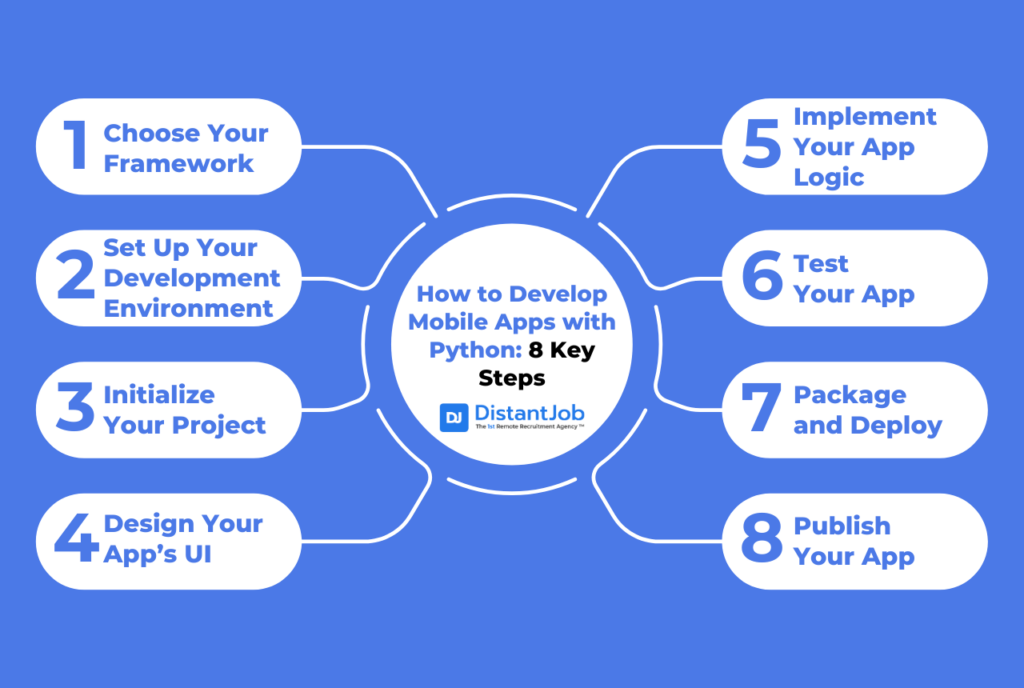
Developing mobile apps with Python involves several key steps that may vary depending on your project’s type and the frameworks you’re using. Here’s a general step-by-step guide get you started, along with some practical tips and code snippets:
Step 1: Choose Your Framework
- Kivy: Ideal for apps requiring custom UIs and graphics, multi-touch support, and cross-platform compatibility beyond iOS and Android (e.g., Windows, Linux, MacOS).
- BeeWare: Best for apps that need a native look and feel on each platform, leveraging native UI elements and aiming for a “write once, run anywhere” approach.
Tip: If you’re unsure which framework to choose, consider the UI needs of your app. If you want more creative control over your interface, Kivy might be the better option. If you prefer native consistency across platforms, go with BeeWare.
Step 2: Set Up Your Development Environment
For Kivy:
- Install Python: Make sure you have Python 3.5 or above installed on your machine.
- Install Kivy: Run the following command in your terminal or command prompt:pip install kivy
- (Optional) Install KivyMD for Material Design components: pip install kivymd.
For BeeWare:
- Install Python.
- Install BeeWare tools:
Run pip install briefcase. - Set up a BeeWare virtual environment to isolate dependencies:
python -m venv beeware-env
source beeware-env/bin/activate
Step 3: Initialize Your Project
For Kivy:
- Start a new project by creating a Python file (e.g., main.py) and import Kivy components to begin developing your app’s UI and logic.
For BeeWare:
Initialize a new project using BeeWare’s Briefcase command:
briefcase new
Follow the prompts to set up your project name and other details.
Sample Project Code (Kivy):
from kivy.app import App
from kivy.uix.button import Button
class MyApp(App):
def build(self):
return Button(text=”Hello, Kivy!”)
if __name__ == “__main__”:
MyApp().run()
Step 4: Design Your App’s UI
For Kivy:
- Kivy uses its .kv language for creating dynamic and flexible UIs. You can create a main.kv file to define your interface:
Button:
text: “Welcome to Kivy”
font_size: 32
For BeeWare:
- Design the UI using Toga’s native widgets:
import toga
from toga.style import Pack
from toga.style.pack import COLUMN, CENTER
def build(app):
box = toga.Box(style=Pack(direction=COLUMN, alignment=CENTER))
button = toga.Button(“Click Me”, on_press=lambda x: print(“Clicked!”), style=Pack(padding=10))
box.add(button)
return box
if __name__ == “__main__”:
app = toga.App(‘My App’, ‘org.example.myapp’, startup=build)
app.main_loop()
Step 5: Implement Your App Logic
- Once your UI is set, incorporate your app’s functionality. This includes handling user interactions, processing data, and defining the overall behavior of the app.
Tip: Use Python libraries like requests for handling network operations or Pillow (PIL) for image processing:
from PIL import Image
img = Image.open(‘image.jpg’)
img = img.rotate(90) # Rotate the image 90 degrees
img.show()
Step 6: Test Your App
- Kivy: Test your app on your development machine using Kivy’s built-in capabilities, and then use tools like Pyjnius for Android or Pyobjus for iOS if you need access to platform-specific APIs.
- BeeWare: Use briefcase dev to run your app in a development mode that simulates the target platform.
Tip: Test your app on as many devices as possible to ensure compatibility across different operating systems.
Step 7: Package and Deploy
For Kivy:
- Package your app for different platforms using PyInstaller (for desktop) or buildozer (for mobile).
buildozer init # To initialize a new Buildozer spec file
buildozer -v android debug # To build the app for Android
For BeeWare:
- Use Briefcase to package your app: briefcase package, followed by briefcase run to run the packaged app. Briefcase will create a distributable package for each target platform.
Tip: Check the official documentation for each tool to resolve any errors or platform-specific requirements.
Step 8: Publish Your App
Follow the specific guidelines for each platform:
- For Android apps: Google Play Store
- For iOS apps: Apple App Store for iOS apps
Tip: Check that your app follows the rules set by each platform. This includes privacy policies, user permissions, and app store guidelines. Keep in mind that you might need to pay fees to become a developer. For example, Google Play charges $25, while Apple asks for $99 per year.
Things to Remember for Python App Development
While Python is quite versatile, there are a few things developers must keep in mind while using it for mobile app development.
- It has a dynamic coop to evaluate the expression. That means the interpreter searches for variables in the current block and all functions. The problem is that each word must be validated in all possible contexts.
- Lambda functions are limited in Python. They can only contain one statement at a time and need to be written on a single line. That means, unlike regular functions, they cannot use explicit return statements.
- Python practices an editor rather than a compiler. If the app has an error, it will only be revealed during execution. Therefore, the speed decreases, and various tests must be created.
Overcoming Platform Limitations: Python and Cross-Platform Development
Python’s adaptability makes it a good pick for many coding jobs, but mobile platforms come with built-in limits you should know about. Unlike Swift for iOS or Kotlin for Android, which are made for these systems, Python doesn’t work right away on mobile operating systems. Still, thanks to outside frameworks and tools, coders can get around these hurdles and build effective solutions that work across different platforms.
Frameworks like Kivy and BeeWare give developers the ability to write code once and use it on many platforms such as iOS, Android, Windows, and Linux. These frameworks connect Python’s general use with what mobile platforms need. While they help a lot, they don’t give full native speed or let you use all platform-specific features. To fix this, developers often mix Python with tools made for specific platforms.
PyInstaller, for example, has a big impact on helping developers pack Python apps into programs that can run on their own on different operating systems. This lets Python apps run well on various platforms without needing separate code for each, which makes developing easier and cheaper.
What’s more, cloud-based options like AWS Lambda or Google Cloud Functions offer another approach to tackle platform-specific challenges. When developers host Python apps in the cloud, they can shift a lot of the platform-dependent work to remote servers. This ensures compatibility across many devices without needing to rebuild the app for each system.
This means Python developers can use different tools and services to work around platform limits. They can build strong cross-platform apps that are flexible and can grow as needed.
Start Your Mobile App with Python Today!
Creating mobile apps with Python has become easier than before. To make your development more efficient, you should use cross-platform frameworks like Kivy or BeeWare. These tools let you write code once and use it on different platforms, which saves time and money. This approach cuts down on duplicate work while keeping your app consistent across devices.
If you’re worried about platform limits, you have good options. Tools like PyInstaller help you package your app for various platforms without hassle, while cloud-based solutions work well across platforms. These tools make it easier to get past any hurdles and ensure your app runs on both iOS and Android.
Finally, make testing a top priority as you build your app. Start testing and keep at it to spot and fix problems before they grow. This helps your app run and cuts down on time and money spent fixing bugs later. An app that’s been put through its paces will work well on all devices and platforms giving users the best experience.If you need to hire skilled Python coders to turn your app ideas into reality, DistantJob can lend a hand. We focus on finding talented remote coders who know their stuff when it comes to building Python apps. Get in touch today, and we’ll help you start your project with the right people, matched to what you need.


